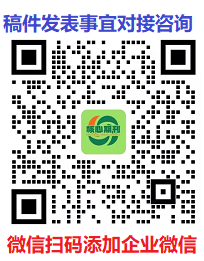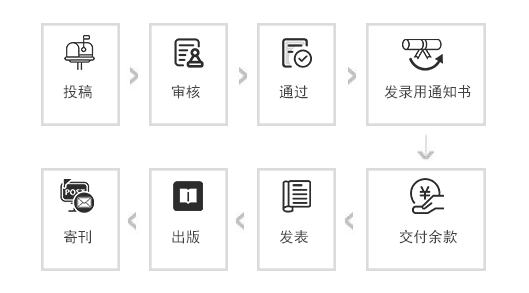Journal of Sulfur Chemistry



- 中国知网数据库(CNKI)全文收录期刊
- 中国核心期刊(遴选)数据库收录期刊
- 中国万方数据库全文收录期刊
- 中国维普科技期刊数据库收录期刊
- 中国龙源数据库全文收录期刊
- 中国期刊网全文收录期刊



中国高校科技期刊研究会第9次会员代表大会在北京召开,中宣部出版局副局长张怀海、教育部科学技术与信息化司一级巡视员张国辉等领导出席会议并发表..
英文简介:The Journal of Sulfur Chemistry is an international journal for the dissemination of scientific results in the rapidly expanding realm of sulfur chemistry. The journal publishes high quality reviews, full papers and communications in the following areas: organic and inorganic chemistry, industrial chemistry, materials and polymer chemistry, biological chemistry and interdisciplinary studies directly related to sulfur science.Papers outlining theoretical, physical, mechanistic or synthetic studies pertaining to sulfur chemistry are welcome. Hence the target audience is made up of academic and industrial chemists with peripheral or focused interests in sulfur chemistry. Manuscripts that truly define the aims of the journal include, but are not limited to, those that offer: a) innovative use of sulfur reagents; b) new synthetic approaches to sulfur-containing biomolecules, materials or organic and organometallic compounds; c) theoretical and physical studies that facilitate the understanding of sulfur structure, bonding or reactivity; d) catalytic, selective, synthetically useful or noteworthy transformations of sulfur containing molecules; e) industrial applications of sulfur chemistry; f) unique sulfur atom or molecule involvement in interfacial phenomena; g) descriptions of solid phase or combinatorial methods involving sulfur containing substrates. Submissions pertaining to related atoms such as selenium and tellurium are also welcome. Articles offering routine heterocycle formation through established reactions of sulfur containing substrates are outside the scope of the journal.中文简介:(来自Google、百度翻译)《硫化学杂志》是在迅速发展的硫化学领域传播科学成果的国际期刊。该期刊在以下领域发表高质量的评论,完整的论文和通讯: 有机和无机化学,工业化学,材料和聚合物化学,生物化学和与硫科学直接相关的跨学科研究。 论文概述了理论,物理,与硫化学有关的机械或合成研究是受欢迎的。因此,目标受众是由对硫化学具有外围或重点兴趣的学术和工业化学家组成的。真正定义该杂志目标的手稿包括但不限于提供以下内容的手稿: a) 硫试剂的创新用途; b) 含硫生物分子,材料或有机和有机金属化合物的新合成方法; c) 有助于理解硫结构、键合或反应性的理论和物理研究; d) 含硫分子的催化、选择性、合成有用或值得注意的转化; e) 硫化学的工业应用; f) 独特的硫原子或分子参与界面现象; g) 涉及含硫底物的固相或组合方法的描述。也欢迎提交与硒和碲等相关原子有关的材料。通过建立含硫底物的反应提供常规杂环形成的文章不在该杂志的范围之内。










英文简介:The Journal of Sulfur Chemistry is an international journal for the dissemination of scientific results in the rapidly expanding realm of sulfur chemistry. The journal publishes high quality reviews, full papers and communications in the following areas: organic and inorganic chemistry, industrial chemistry, materials and polymer chemistry, biological chemistry and interdisciplinary studies directly related to sulfur science.Papers outlining theoretical, physical, mechanistic or synthetic studies pertaining to sulfur chemistry are welcome. Hence the target audience is made up of academic and industrial chemists with peripheral or focused interests in sulfur chemistry. Manuscripts that truly define the aims of the journal include, but are not limited to, those that offer: a) innovative use of sulfur reagents; b) new synthetic approaches to sulfur-containing biomolecules, materials or organic and organometallic compounds; c) theoretical and physical studies that facilitate the understanding of sulfur structure, bonding or reactivity; d) catalytic, selective, synthetically useful or noteworthy transformations of sulfur containing molecules; e) industrial applications of sulfur chemistry; f) unique sulfur atom or molecule involvement in interfacial phenomena; g) descriptions of solid phase or combinatorial methods involving sulfur containing substrates. Submissions pertaining to related atoms such as selenium and tellurium are also welcome. Articles offering routine heterocycle formation through established reactions of sulfur containing substrates are outside the scope of the journal.中文简介:(来自Google、百度翻译)《硫化学杂志》是在迅速发展的硫化学领域传播科学成果的国际期刊。该期刊在以下领域发表高质量的评论,完整的论文和通讯: 有机和无机化学,工业化学,材料和聚合物化学,生物化学和与硫科学直接相关的跨学科研究。 论文概述了理论,物理,与硫化学有关的机械或合成研究是受欢迎的。因此,目标受众是由对硫化学具有外围或重点兴趣的学术和工业化学家组成的。真正定义该杂志目标的手稿包括但不限于提供以下内容的手稿: a) 硫试剂的创新用途; b) 含硫生物分子,材料或有机和有机金属化合物的新合成方法; c) 有助于理解硫结构、键合或反应性的理论和物理研究; d) 含硫分子的催化、选择性、合成有用或值得注意的转化; e) 硫化学的工业应用; f) 独特的硫原子或分子参与界面现象; g) 涉及含硫底物的固相或组合方法的描述。也欢迎提交与硒和碲等相关原子有关的材料。通过建立含硫底物的反应提供常规杂环形成的文章不在该杂志的范围之内。
来稿要求:
论点新颖、论证严密、论据充足、文字精练。论文字数:5000字符-8000字符为宜,图表也要计算在内,不包括英文摘要关键词。
标 题:
文章标题要言简意赅,30字以内。作者署名:署真实姓名,注明作者单位、单位所在省市和邮政编码。摘 要:要用第三人称概括全文,300字以内。
关 键 词:
用3~8个关键词术语反映论文主题。专用符号:名词、术语、数字、计量单位、标点符号和数学符号等,必须符合国家标准;外文人名、地名和术语需译成中文。
图表格式:
文中插图与表格放在相应正文之后,分别按出现顺序用图1、图2或表1、表2统一编号。插图应为黑白色,其序号、标题及注释居中放在图的下方,表格的序号及标题置于表格上方,表注放在表格的下方(建议:由于篇幅限制,除核心期刊外尽量不用或少用图表)。
正文注释:
采用尾注形式,注释号①,②,③等标在相应正文右上角。
章节体例:
章节标题为:一级标题不编号,用黑体居中排,二级标题不编号,用楷体放在相应的文字段首与正文空一字格接排正文。 三级标题分别用1.2.3.顺序编号。文中接排标题用(1),(2)编号。
参考文献:
参考文献置于正文之后,近5年的不少于3条,用[1],[2]……顺序编号,如文章中有内容需要解释请用尾注形式。参考文献不全者不能进入审稿阶段。{参考文献格式如下:(1)图书:作者.书名(版本)[M].出版所在地: 出版社,出版年:(1)页码.
(2)期刊:作者.题目[J].期刊名,年,卷(期):页码.
(3)电子参考文献:作者.题目[OL].(文章的发表日期).[本文引用日期].作者简介:来稿者请附个人简介,内容包括姓名(出生年—),性别,籍贯,民族,学历,工作单位,职称,研究方向,通讯地址,联系电话及电子信箱。
一般情况下,您将在3个工作日内收到审稿结果。如文章有很强的时效性,请说明需要最晚刊发时间。
| 论文编号 | 作者姓名 | 论文题目 | 录用情况 |
|---|---|---|---|
| TG251-13579 | 韩丽炘 孟涛 温娟娟 刘晓琴 | 基于互联网的CBL+TBL教学法在病理学实验教学中的应用 | 已录用 |
| TG251-13681 | 邹隆强 杨清余 钟鸿路 李正南 陈 | 医学运动康复联合消肿止痛方治疗急性踝关节扭伤临床研究 | 已录用 |
| TG251-13794 | 林雨慧 陈霄雯 郑颖彦 朱永凯 贾 | 基于SWOT模型的儿童专科医院临床研究发展策略分析 | 已录用 |
| TG251-13762 | 郑鸿雁 | 重复经颅磁刺激治疗肝脾不调型功能性肛门直肠痛的临床研究 | 已录用 |
| TG251-13891 | 袁召1 赵会谢2 赵海深3 | 真武汤治疗阳虚水泛型慢性心力衰竭患者的临床研究 | 已录用 |
| TG251-13536 | 王杰1 张蕾蕾2 | 血脂和载脂蛋白水平与分化型甲状腺癌及其病理学特征的相关性探究 | 已录用 |
| GD24-5203 | 单一青 高鹏慧 姚瑶 | 思维导图护理对宫颈癌患者行腹腔镜术后康复的影响 | 已录用 |
| GD24-5217 | 林秀娟 梁静文 刘美仙 陈惠贤 | 加速康复外科管理模式在胸腔镜肺段切除术患者围手术期护理中的应用效果 | 已录用 |
| GD24-5213 | 杨素雯 何洁芳 陈妙霞 廖景升 | 健康行为改变整合理论对于宫颈癌晚期放疗患者依从性及自我效能的影响 | 已录用 |
| GD24-5199 | 杨月惠 王凤婷 | 个体护理计划在心脏瓣膜置换手术围手术期患者中的应用 | 已录用 |
邮箱:cnkibianjibu@163.com
QQ:
扫码联系: